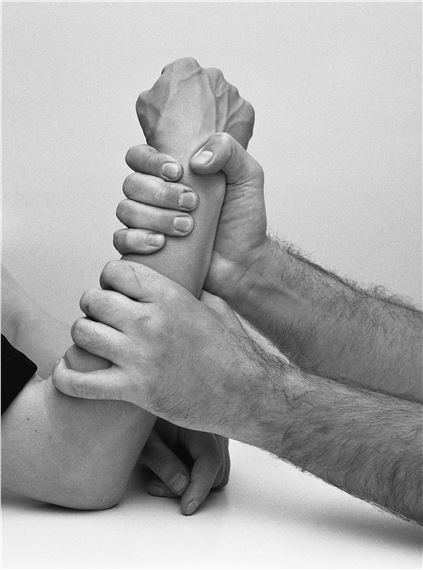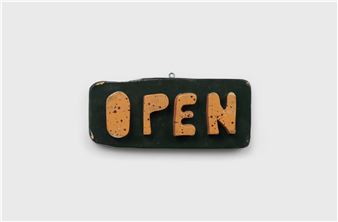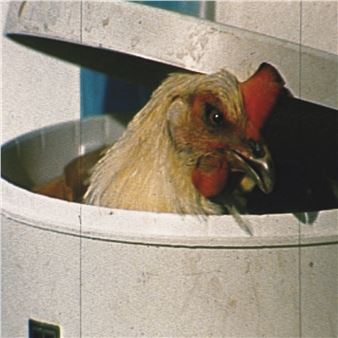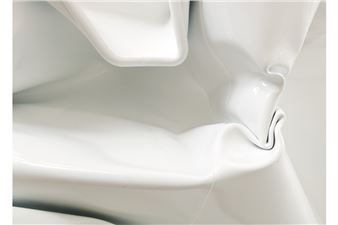Change to come. Engagement in Polish art
Art is always a mirror of the times, a reflection of the present, and a response to social issues. This is illustrated by the exhibition “Change to come”. The show features artists who live and work in Poland and focuses on their desire for social, political, and artistic change.
Criticism and “engagement” have been one of the key phenomenon in Polish art in recent decades. In view of the dynamic global upheavals, however, the exhibition does not limit itself to Poland, but raises fundamental questions about the relationship between art and society. In doing so, it emphasises the role of the artist as a witness to contemporary challenges and as an active agent of change.
In the exhibition, a dialogue is created between historical works of art and contemporary ones. The historical section presents key figures in Polish art of the twentieth century, their strategies and artistic practices, starting with the doctrine of socialist realism in the 1940s and 1950s, through the so-called “Small Stabilization” period in the 1960s and 1970s, down to the 1980s and the introduction of martial law. After the country regained its independence in the 1990s, “critical art” emerged.
The historical works are juxtaposed with contemporary pieces created by artists of the middle and young generations who are responding to current crises and tensions. These items are characterised by the concept of “engagement”, which seems to permeate all aspects of life. Artists from Ukraine and Belarus are now an integral part of the Polish art scene.

Recommended for you
Art is always a mirror of the times, a reflection of the present, and a response to social issues. This is illustrated by the exhibition “Change to come”. The show features artists who live and work in Poland and focuses on their desire for social, political, and artistic change.
Criticism and “engagement” have been one of the key phenomenon in Polish art in recent decades. In view of the dynamic global upheavals, however, the exhibition does not limit itself to Poland, but raises fundamental questions about the relationship between art and society. In doing so, it emphasises the role of the artist as a witness to contemporary challenges and as an active agent of change.
In the exhibition, a dialogue is created between historical works of art and contemporary ones. The historical section presents key figures in Polish art of the twentieth century, their strategies and artistic practices, starting with the doctrine of socialist realism in the 1940s and 1950s, through the so-called “Small Stabilization” period in the 1960s and 1970s, down to the 1980s and the introduction of martial law. After the country regained its independence in the 1990s, “critical art” emerged.
The historical works are juxtaposed with contemporary pieces created by artists of the middle and young generations who are responding to current crises and tensions. These items are characterised by the concept of “engagement”, which seems to permeate all aspects of life. Artists from Ukraine and Belarus are now an integral part of the Polish art scene.
Artists on show
- Agnieszka Piotrowska
- Agnieszka Polska
- Ala Savashevich
- Andrzej Jan Wróblewski
- Bogdan Lopienski
- Daniel Kotowski
- Dominika Olszowy
- Jaroslaw Kozlowski
- Joanna Piotrowska
- Józef Robakowski
- Julita Wójcik
- Jurry Zielinski
- Katarzyna Kozyra
- Katarzyna PrzezwaЕ„ska
- Malgorzata Mirga-Tas
- Marcin Maciejowski
- Marek Sobczyk
- Maria Jarema
- Marian Bogusz
- Marta Romankiv
- MikoЕ‚aj Sobczak
- Oskar Dawicki
- PaweЕ‚ Е»ukowski
- Przybyszki
- Rafal Bujnowski
- Renata Rara Kaminska
- Teresa Murak
- Weronika Zalewska
- Wilhelm Sasnal
- WЕ‚odzimierz Pawlak
- Wojciech Bruszewski
- Yulia Krivich
Related articles
Art is always a mirror of the times; a reflection of the present; a response to social questions. That is illustrated by “The Change to Come”, an exhibition to be held at the Lipsiusbau from 7 November 2024 to 16 March 2025.
Art is always a mirror of the times; a reflection of the present; a response to social questions.

 ARTISTS
ARTISTS
















